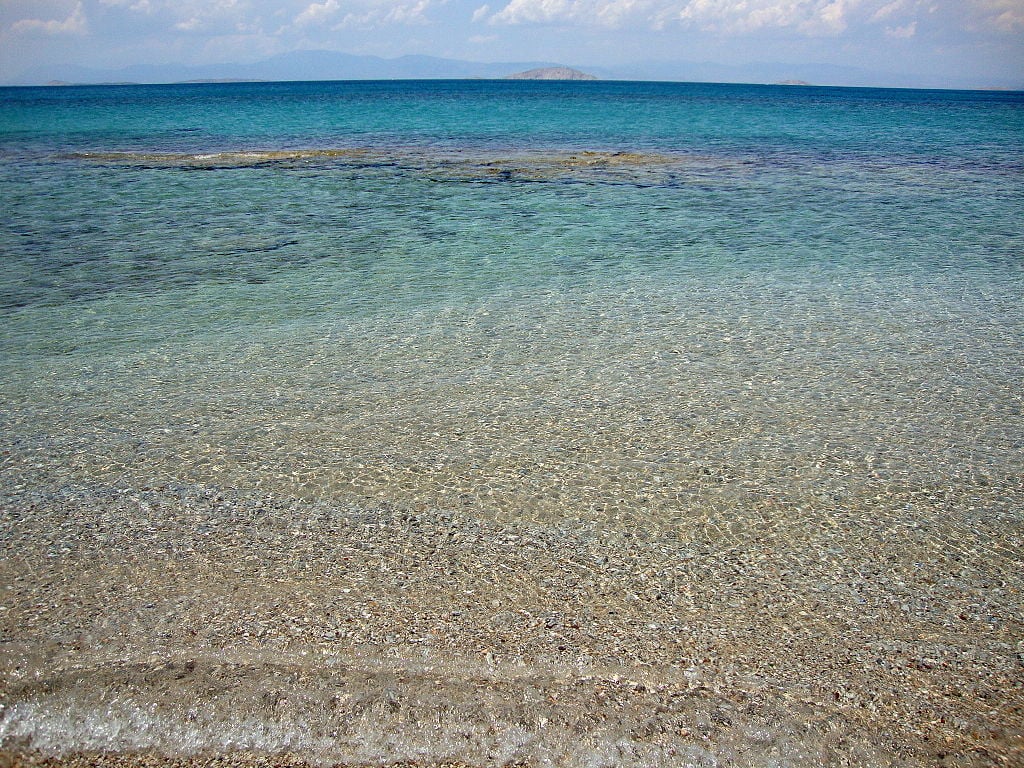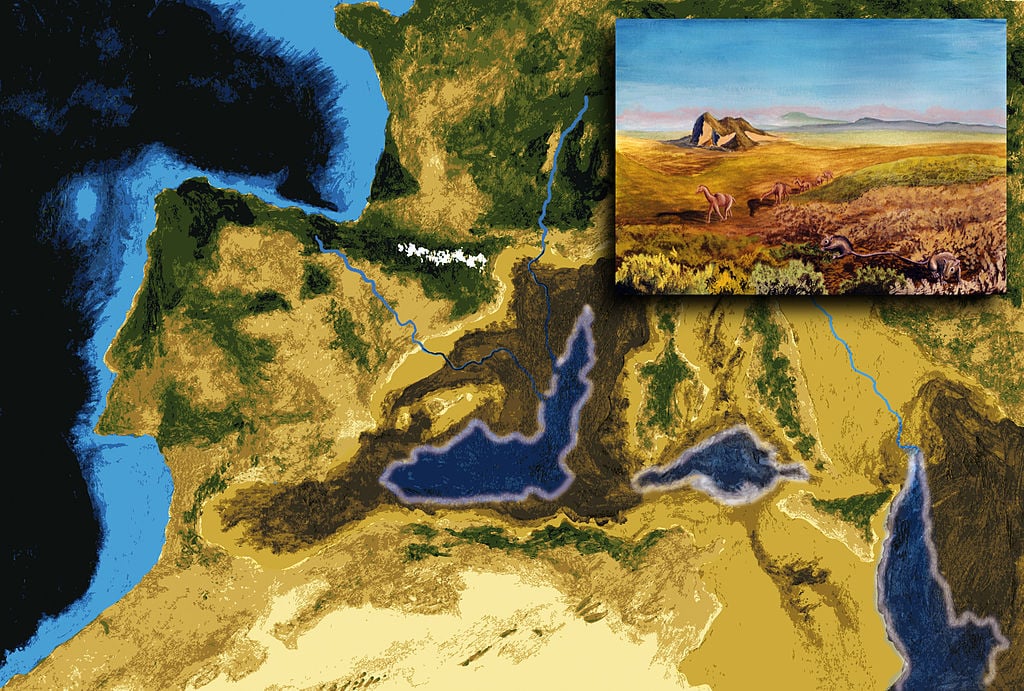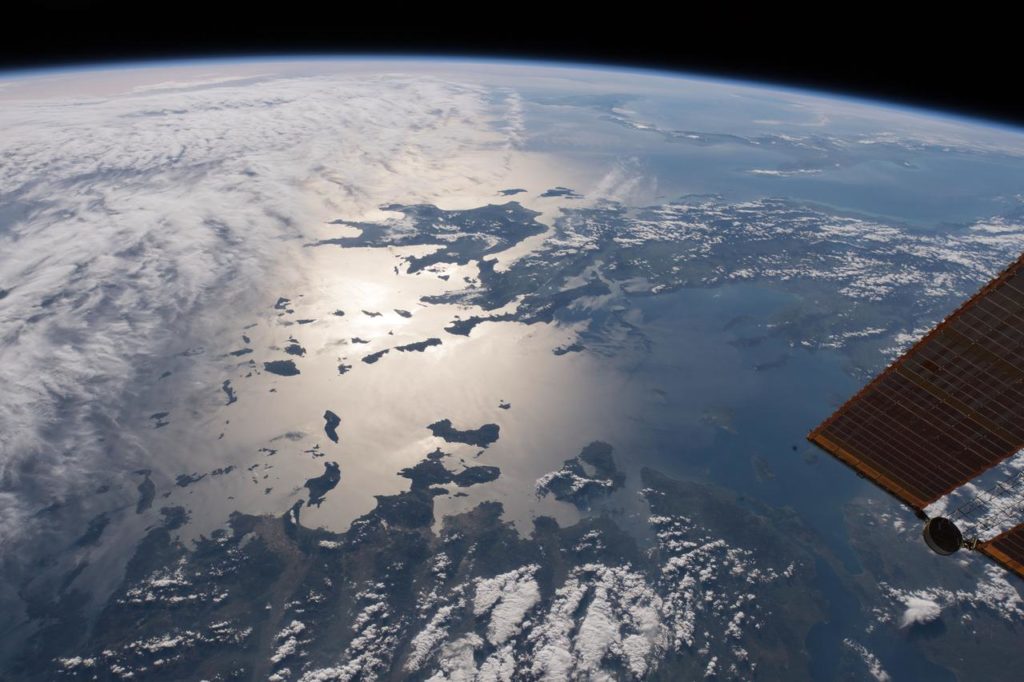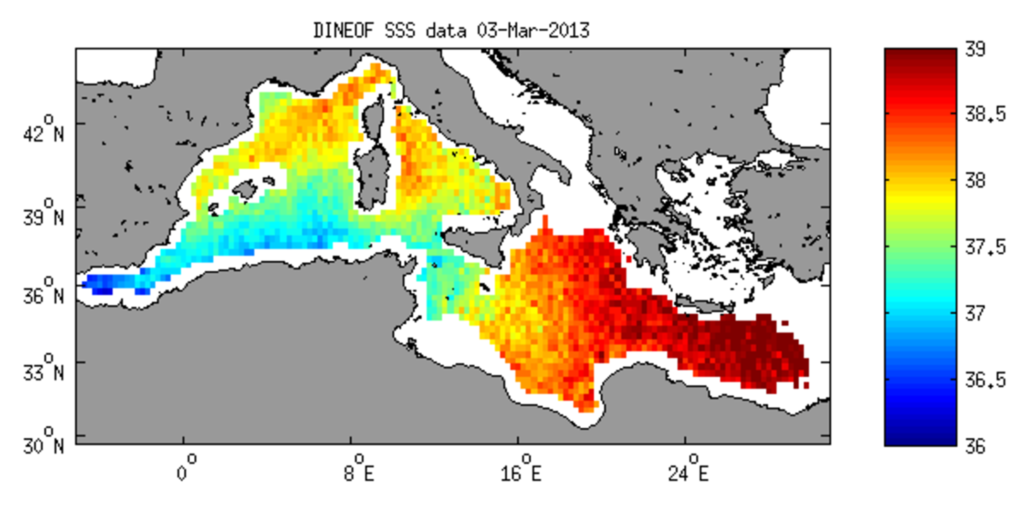
The Mediterranean Sea is one of the most storied and lovely bodies of water anywhere in the world — and it is also one of the saltiest.
Almost completely enclosed by land, the “wine-dark sea” of Homer has played a central role in the history of Western civilization.
Geological evidence tells us that approximately 5.9 million years ago, the Mediterranean was cut off from the Atlantic and was partly or completely desiccated over a period of some 600,000 years during what is called the “Messinian salinity crisis” — before being refilled by the Zanclean flood about 5.3 million years ago.
Travelers who have never been to the Mediterranean may not realize how very different its waters are from the great oceans of the world. As anyone who has been there can attest, there is a great degree of buoyancy to its waters, since its density is greater than most ocean waters due to its high salt content.

Its unique, almost land-locked, location has led to its status as one of the saltiest seas on the globe, making it rank 21st in bodies of water with the most salinity globally — with mostly landlocked lakes above it.
And it’s getting more so by the day, according to recent research.
Most seawater has about 35 grams (7 teaspoons) of salt in every 1,000 grams (about a liter, or quart) of water. This doesn’t sound like much at all, but it would take almost two shipping containers full of salt to make an Olympic-size swimming pool as salty as the average sea.

And not only is the Mediterranean saltier than most, it is showing no signs of reversing that trend anytime soon.
While the salinity of the ocean varies from place to place, especially at the surface, most ocean water has a salinity between 34 parts per thousand (ppt) and 36 ppt.
The difference between 34 ppt and 36 ppt in salinity doesn’t sound like very much, but it is enough to cause a difference in density. Even slightly denser seawater sinks below less dense water.
The Mediterranean Sea, however, has very high salinity – 38 ppt or more. It is almost closed from the Atlantic Ocean, and there is three times more evaporation than there is rain or freshwater flowing into it from rivers.
Additionally, because of the high temperatures in the Mediterranean region, evaporation in the Mediterranean Sea occurs much more rapidly than in other bodies of water, leaving more salt behind as fresh water molecules rise from it and enter the atmosphere.

The warm, dense, salty water of the Mediterranean is replaced by the much less salty Atlantic water that flows in through the Strait of Gibraltar. Water that enters the Mediterranean from the Atlantic usually remains in the Sea for anywhere from 80 to 100 years before returning to the Atlantic Ocean, according to researchers.
The Mediterranean loses three times more fresh water from evaporation than it takes in from its many tributaries – even including gigantic rivers such as the Nile, and the somewhat smaller Po, Rhone, Ebros, Tiber, Ceyhan, Seyhan, Adige, Neretva, and Drin-Bojana rivers.
In fact, it would dry up entirely — as it did more than once in times long past — if it weren’t for the amount of water it takes in through the Strait of Gibraltar.
Scientists have discovered that the salt and sediments at the bottom of the Mediterranean Sea prove that on several occasions over the course of history, the Mediterranean Sea has indeed dried up, leaving a large layer of salt behind it.
At that time the Strait of Gibraltar itself closed up, stopping any water from flowing back and forth between the Atlantic Ocean and the Mediterranean.
During what researchers call the Messinian Salinity Crisis, a geological event occurring from 5.96 to 5.33 million years ago during the Miocene Epoch, the Mediterranean Sea went into a cycle of partial or nearly complete desiccation. This enabled the migration of mammals, including camels, into Europe.
The basin then filled up again with water from the Atlantic during what is called the Zanclean Flood.

As can be seen from the NASA satellite image above, the Mediterranean is still clearly among the saltiest bodies of water anywhere on the planet. The data depicted shows average salinity from May 27 to June 2, 2012, in a range from 30 to 40 grams per kilogram, with 35 grams being the average. Lower values are represented in purples and blues; higher values are shown in shades of orange and red.
Black areas occur where no data was available, either due to the orbit of the satellite or because the ocean was covered by ice, which Aquarius cannot see through.

NASA created an animation, clickable here, of how salinity patterns changed week by week in all the major bodies of water on the Earth, including the Mediterranean, over the year 2012.
As oceanographers have known for many years — but now can “see”— the Atlantic Ocean is saltier than the Pacific and Indian Oceans. Rivers such as the Amazon carry tremendous amounts of fresh runoff from land and spread plumes far into the sea.
And in the tropics — particularly near the Pacific’s Inter-Tropical Convergence Zone — extra rainfall makes equatorial waters somewhat fresher.
Near most coastlines and inland seas in the map, waters appear much fresher or saltier than in open-ocean locations. Notice the Red Sea and the Mediterranean are remarkable for their much saltier waters.

Salinity — and temperature — rising gradually in Mediterranean
In Spain, oceanographic stations were visited four times over the course of 2010 in order to monitor the temperature, salinity and biochemical properties of the Mediterranean. The Western Mediterranean is indeed heating up and becoming saltier, according to their research.
Every year, they found, the temperature of the deep layer of the Western Mediterranean increases by 0.0036 degrees Fahrenheit (0.002 degrees Celsius), and its saltiness increases by 0.001 units of salinity, they found. They say that the change is consistent with the expected effects of global warming.
These changes may sound minor, but they have been building up at a faster pace since the 1990s, according to the study, detailed in the April 1, 2010 edition of the Journal of Geophysical Research.
The results show a consistent trend, “but to confirm this accelerating trend, we need to monitor it over the years to come,” said study author Manuel Vargas-Yáñez of the Spanish Institute of Oceanography.
The researchers analyzed the temperature and salt levels of the three layers of the Mediterranean Sea: the upper layer (from the surface to 656 feet, or 200 meters, deep with water that enters from the Atlantic); the middle layer (from 656 to 1,968 feet, or 200 to 600 meters, deep with water from the eastern Mediterranean that enters the western basin via the Strait of Sicily); and the deep layer (from 1,968 down to the sea bed, or 600 meters and deeper, with water from the western Mediterranean).
“These layers, especially the deep one, take up a huge volume, and raising its temperature each year by one-thousandth of a degree requires an enormous amount of heat,” Vargas-Yáñez explained.
The team has also observed an increase in the salt level and the temperature of the middle layer of the sea. This has not been clearly observed in the upper layer, “but it can be deduced from the heating of the deep water and from studies done by other teams and our current research projects,” Vargas-Yáñez said.
An increase in ocean salinity suggests an increase in the net evaporation of the water — the difference between evaporation and precipitation and other flows into the sea. When the amount of evaporated water leaving the sea is greater than the amount of water entering it, that means overall less water is part of the sea — which contains the same amount of salt. This is how the sea becomes saltier over time.
Oceanographer Ruth Curry of Woods Hole Oceanographic Institution in Massachusetts adds that a greater evaporation rate can be due to a warmer ocean, but other factors can come into play as well, such as the humidity and temperature of the atmosphere.
In addition, the Mediterranean is an enclosed sea, so certain land-use issues such as damming rivers could change how much freshwater is flowing into the ocean and diluting the saltwater.
Scientists are indeed seeing a change in the evaporation-precipitation patterns of the ocean, which is consistent with what’s expected under greenhouse gas-driven warming, Curry told LiveScience.
The top layer of all Earth’s oceans has warmed significantly over the past decades, according to another study detailed in the May 20, 2010 issue of the journal Nature. From 1993 to 2008, the top 2,300 feet (700 meters) of the world’s oceans warmed 0.64 watts per square meter.
That’s equal to adding the energy from 100 million atomic bombs to the ocean each year during the 16-year period, according to John Lyman of the University of Hawaii.
See all the latest news from Greece and the world at Greekreporter.com. Contact our newsroom to report an update or send your story, photos and videos. Follow GR on Google News and subscribe here to our daily email!



